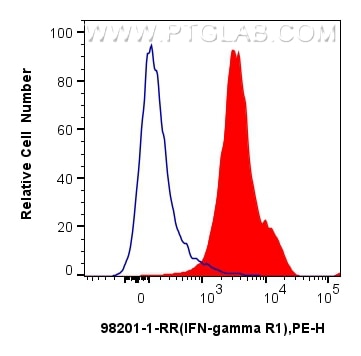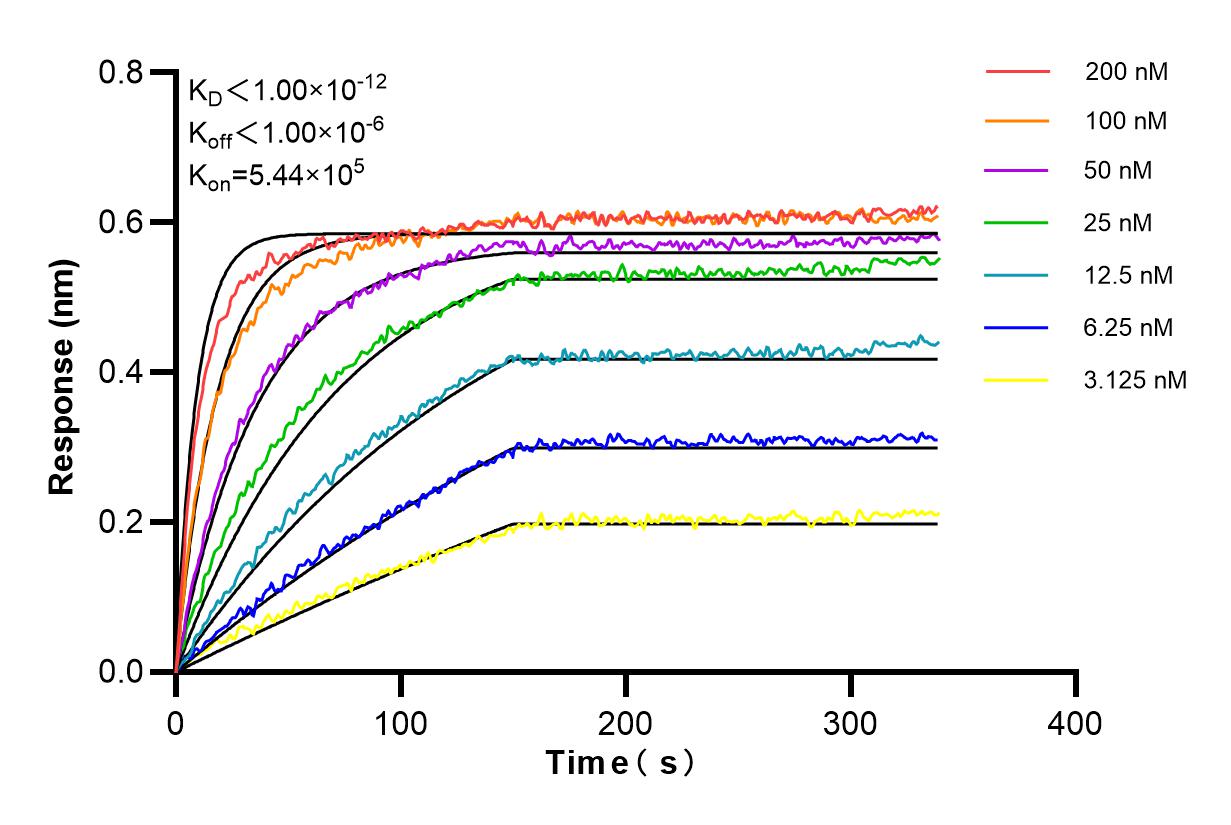Validation Data Gallery
Tested Applications
| Positive FC detected in | mouse splenocytes |
Recommended dilution
| Application | Dilution |
|---|---|
| Flow Cytometry (FC) | FC : 0.25 ug per 10^6 cells in 100 μl suspension |
| This reagent has been tested for flow cytometric analysis. It is recommended that this reagent should be titrated in each testing system to obtain optimal results. | |
| Sample-dependent, Check data in validation data gallery. | |
Product Information
98201-1-RR targets IFNGR1/CD119 in FC applications and shows reactivity with mouse samples.
| Tested Reactivity | mouse |
| Host / Isotype | Rabbit / IgG |
| Class | Recombinant |
| Type | Antibody |
| Immunogen |
Recombinant protein 相同性解析による交差性が予測される生物種 |
| Full Name | interferon gamma receptor 1 |
| Calculated molecular weight | 52kDa |
| GenBank accession number | NM_010511.3 |
| Gene Symbol | Ifngr1 |
| Gene ID (NCBI) | 15979 |
| Conjugate | Unconjugated |
| Form | |
| Form | Liquid |
| Purification Method | Protein A purfication |
| UNIPROT ID | P15261 |
| Storage Buffer | PBS with 0.09% sodium azide{{ptg:BufferTemp}}7.3 |
| Storage Conditions | Store at 2 - 8°C. Stable for one year after shipment. |
Background Information
Interferon-gamam (IFN-γ) is a cytokine critical for innate and adaptive immunity against viral and intracellular bacterial infections and for tumor control. Cellular responses to IFN-γ are activated through its interaction with a heterodimeric receptor consisting of two subunits, IFNGR1 (CD119) and IFNGR2. IFNGR1 is the ligand-binding subunit which binds IFN-γ with high affinity, whereas IFNGR2 serves as the accessory subunit. Two subunits bind one IFN-γ dimer. Defects in IFNGR1 are a cause of mendelian susceptibility to mycobacterial disease (MSMD), also known as familial disseminated atypical mycobacterial infection. (PMID: 17981204; 946248; 10888113)
Protocols
| Product Specific Protocols | |
|---|---|
| FC protocol for IFNGR1/CD119 antibody 98201-1-RR | Download protocol |
| Standard Protocols | |
|---|---|
| Click here to view our Standard Protocols |


